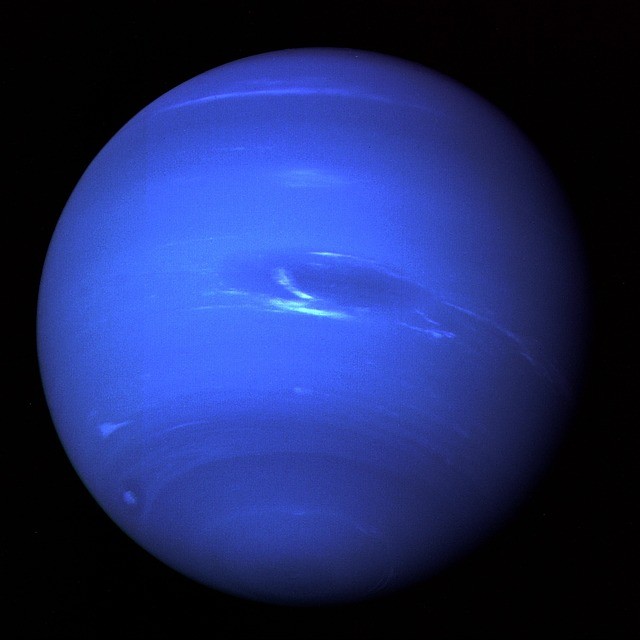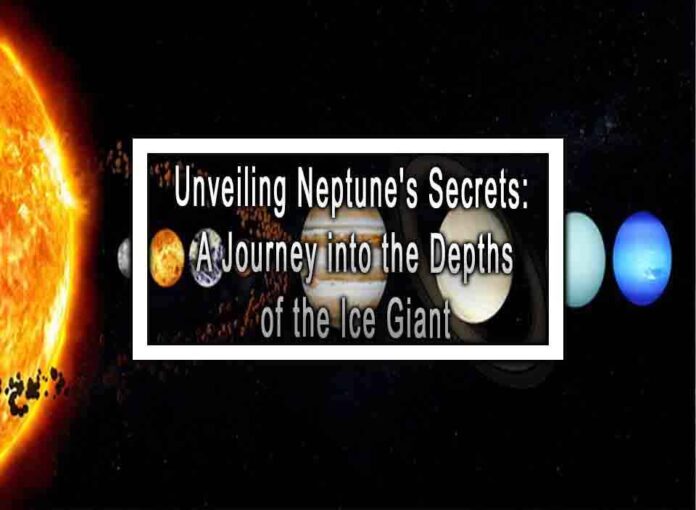Neptune, the eighth and farthest planet from the Sun in our solar system, is indeed an ice giant with many secrets waiting to be unveiled. As one of the most distant and mysterious planets, Neptune’s unique characteristics and hidden features have captured the fascination of astronomers and space enthusiasts. Let’s take a journey into the depths of the ice giant and explore some of its secrets:
1. Cold and Distant Realm:
Neptune’s distance from the Sun places it in a frigid and dimly lit region of our solar system. Despite its distance, Neptune experiences extreme cold, with temperatures plummeting to around -224 degrees Celsius (-371 degrees Fahrenheit).

2. Atmospheric Composition:
The planet’s atmosphere is primarily composed of hydrogen and helium, similar to the gas giants Jupiter and Saturn. However, Neptune’s atmosphere also contains a significant amount of methane, which gives the planet its characteristic blue color.
3. Dynamic Weather Systems:
Neptune is known for its dynamic and turbulent weather patterns. The planet’s atmosphere is marked by strong winds and the fastest recorded wind speeds in the solar system. Massive storms, such as the Great Dark Spot and Scooter, have been observed on its surface.
4. Submerged Oceans:
Beneath Neptune’s thick atmosphere lies a complex system of layers, including a mantle of water, ammonia, and methane ice. It’s believed that the intense pressure and heat in the planet’s interior might create conditions where water exists in a supercritical state, with properties between those of a liquid and a gas.
5. The Mystery of the Magnetic Field:
Neptune boasts a strong and tilted magnetic field, which is offset from the planet’s rotational axis. The exact cause of this unusual magnetic field remains a subject of scientific inquiry, and its dynamics are still not fully understood.
6. Rings and Moons:
Neptune has a system of rings and moons, each with its own intriguing characteristics. One of its most notable moons is Triton, which orbits the planet in the opposite direction of its rotation, suggesting that it may have been captured from the Kuiper Belt, a region beyond Neptune.
7. Deep Space Exploration:
Neptune has been visited by only one spacecraft, Voyager 2, which conducted a flyby in 1989. Despite the brief encounter, Voyager 2 provided valuable insights into Neptune’s atmosphere, rings, and magnetic field.
8. Future Exploration:
While Neptune remains distant and challenging to explore, there have been discussions and conceptual missions proposed for sending spacecraft to study the ice giant more extensively. These missions could provide a deeper understanding of Neptune’s composition, structure, and mysteries.
9. A Window into Planetary Formation:
Studying Neptune can offer insights into the processes that shaped our solar system. Its composition, rings, and moons may provide clues about the conditions and events that occurred during the early stages of planetary formation.
As technology advances and our understanding of the universe deepens, we may eventually uncover more of Neptune’s secrets. Exploring the ice giant’s mysteries not only expands our knowledge of the solar system but also fuels our curiosity about the vast and enigmatic realms that exist beyond our home planet.










